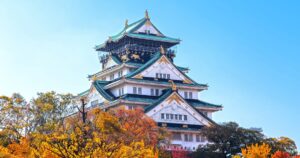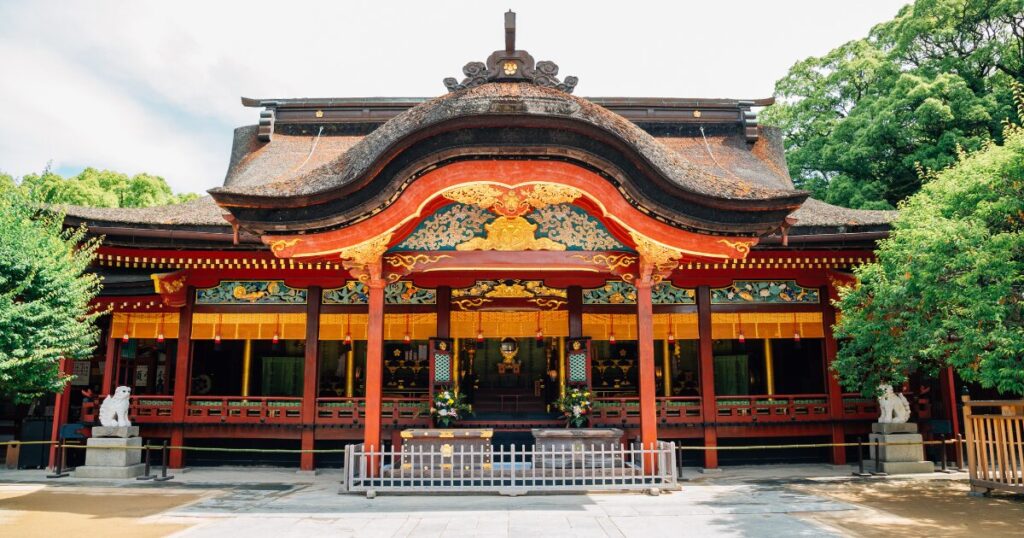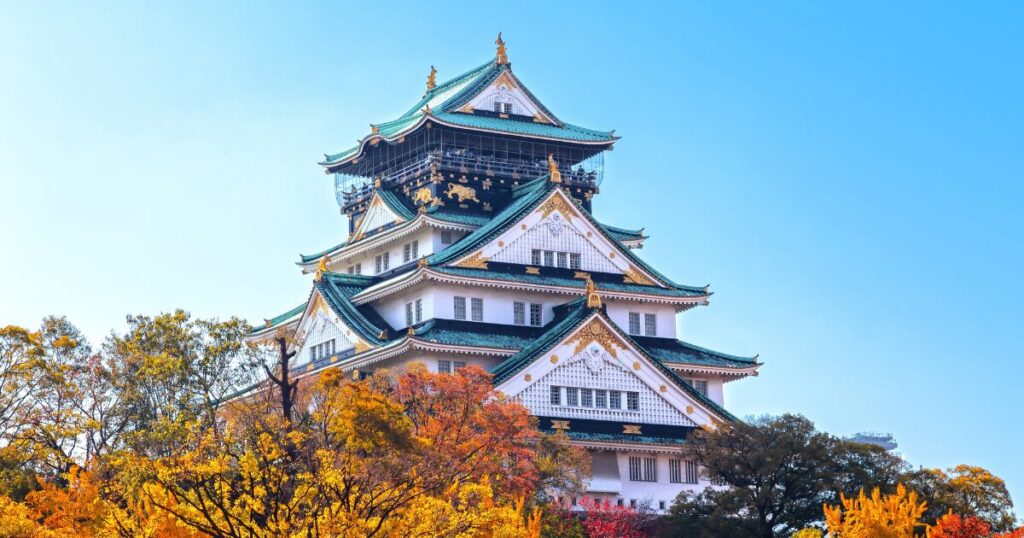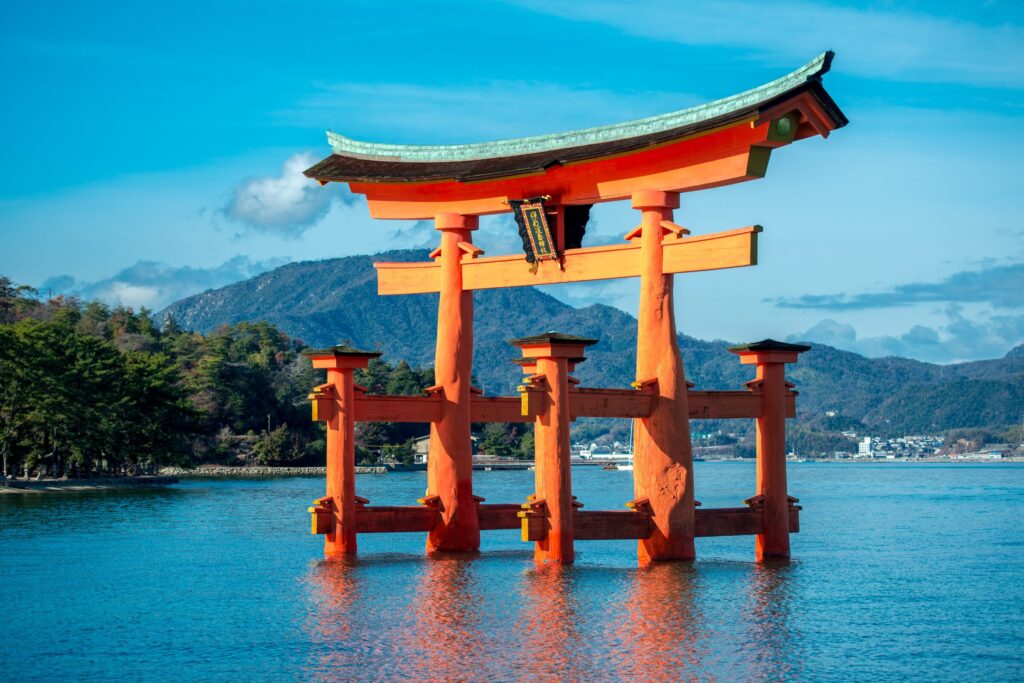When Japanese people think of Tohoku, they often picture lush nature, delicious food, and a rich cultural heritage. Despite its incredible beauty and history, Tohoku remains one of Japan’s lesser-known regions among foreign tourists, making it the perfect “hidden gem” destination.
If you’re looking to escape the crowds and explore a more authentic side of Japan, Tohoku offers countless treasures—from breathtaking natural landscapes to centuries-old temples and castles. And the food? It’s some of the freshest and most unique in the country.
In this article, we’ll take you on a journey through Tohoku’s six prefectures, highlighting the best places to visit and local specialties you can’t miss. Whether you’re drawn to the tranquility of a hot spring in Akita or the historical depth of a castle in Fukushima, Tohoku has something for every traveler.
1. Miyagi Prefecture (宮城県)
Matsushima (松島)

Matsushima is one of Japan’s Three Scenic Views, featuring over 260 pine-covered islands scattered across Matsushima Bay. The breathtaking seascape is best enjoyed from one of the many viewpoints or by taking a boat tour. Matsushima is also home to historical sites like Zuiganji Temple, and offers a tranquil, picturesque atmosphere perfect for relaxation and contemplation.
Sendai Castle Ruins (仙台城跡)

Sendai Castle Ruins, also known as Aoba Castle, offers panoramic views of Sendai City. Though the castle was destroyed during WWII, visitors can explore the remains of the stone walls, a reconstructed watchtower, and a statue of the famous samurai Date Masamune, the castle’s founder. It’s a must-see for history enthusiasts and those seeking scenic city views.
Sendai Asaichi (仙台朝市)
Known as the “Kitchen of Sendai,” Sendai Asaichi is a lively marketplace filled with fresh produce, seafood, and local delicacies. The market is a great place to taste regional specialties like gyūtan (grilled beef tongue) and to experience the everyday hustle and bustle of local life in Sendai.
- Website: https://discoversendai.travel/places/sendai-asaichi-morning-market/
- Address: Chuo 4-chome, Aoba-ku, Sendai
- Business Hours: 8:00 – 17:00
Akiu Onsen (秋保温泉)

Akiu Onsen is one of the top hot spring resorts in Miyagi, known for its rejuvenating waters and scenic surroundings. Located just a short drive from Sendai, the area boasts luxurious ryokan (traditional inns) and outdoor baths that allow visitors to relax while enjoying the natural beauty of the area, including the nearby Akiu Waterfall.
Naruko Gorge & Onsen (鳴子峡・鳴子温泉)

Naruko Gorge is famous for its stunning autumn foliage, with vibrant reds and yellows lining the cliffs, and Naruko Onsen is renowned for its variety of hot spring waters, offering different mineral compositions that provide various health benefits. It’s a perfect destination for both nature lovers and those seeking relaxation.
Kanegasaki Shrine (金蛇水神社)
Kanegasaki Shrine, located in Iwanuma, is dedicated to the water deity and known for bringing prosperity and good fortune. Surrounded by lush greenery, the shrine is a serene place of worship, with an interesting connection to snake symbols, which represent rebirth and wealth in Japanese culture.
2. Aomori Prefecture (青森県)
Hirosaki Castle (弘前城)
Hirosaki Castle, famous for its beautiful cherry blossoms, is a three-story fortress located in Hirosaki Park. Every spring, the park hosts one of Japan’s most celebrated cherry blossom festivals, attracting visitors from across the country. The castle’s history, combined with its stunning seasonal beauty, makes it a must-see in Aomori.
Oirase Gorge (奥入瀬渓流)

Oirase Gorge is a scenic natural wonder stretching along the Oirase River, known for its waterfalls, deep forests, and hiking trails. The gorge is especially beautiful in autumn, when the leaves turn vibrant red and gold. The sound of rushing water and peaceful surroundings make this a perfect destination for nature lovers.
Lake Towada (十和田湖)

Lake Towada, located in Towada-Hachimantai National Park, is a deep volcanic crater lake famous for its clear blue waters. Visitors can enjoy boating, hiking, and beautiful autumn foliage around the lake. The lake is also part of the Towada-Hachimantai UNESCO Global Geopark, recognized for its geological significance.
Shirakami Sanchi (白神山地)

Shirakami Sanchi is a UNESCO World Heritage site, home to one of the largest remaining virgin beech forests in the world. The area is rich in biodiversity and offers numerous hiking trails, waterfalls, and scenic viewpoints. It’s an excellent destination for outdoor enthusiasts and those interested in Japan’s natural heritage.
Sannai-Maruyama Ruins (三内丸山遺跡)
Sannai-Maruyama is one of Japan’s most significant archaeological sites, showcasing life during the Jomon period. Visitors can explore reconstructed houses and view artifacts that date back over 5,000 years, offering a fascinating glimpse into ancient Japan’s culture and society.
Mount Osore (恐山)

Mount Osore, known as one of Japan’s three most sacred sites, is associated with the afterlife in Japanese mythology. The volcanic landscape is eerie, with sulfurous hot springs and barren terrain, but it also has a spiritual significance, attracting pilgrims seeking to communicate with the dead.
Takayama Inari Shrine (高山稲荷神社)
Takayama Inari Shrine is famous for its long pathway of red torii gates that create a picturesque tunnel leading to the main shrine. Set against a beautiful backdrop of mountains and rice fields, the shrine is a symbol of agricultural prosperity and offers a serene escape for visitors.
Hasshoku Center (八食センター)
Hasshoku Center is a bustling seafood market in Hachinohe City, offering fresh fish, shellfish, and local delicacies. It’s a must-visit for food lovers, where you can sample freshly prepared dishes or grill your own seafood at the on-site barbecue area.
3. Akita Prefecture (秋田県)
Nyuto Onsen (乳頭温泉郷)

Nyuto Onsen is a rustic hot spring village nestled in the mountains of Akita. The area is known for its traditional ryokan and outdoor baths surrounded by nature. Each onsen offers a different mineral composition, providing various health benefits. It’s a secluded and peaceful retreat for onsen enthusiasts.
Lake Tazawa (田沢湖)

Lake Tazawa, the deepest lake in Japan, is known for its stunning cobalt-blue waters. Surrounded by lush greenery and mountains, it’s a popular spot for boating, hiking, and cycling. The statue of Tatsuko, a local legend, stands by the lake, adding a touch of cultural history to the natural beauty.
Kakunodate Weeping Cherry Trees (角館のシダレザクラ)
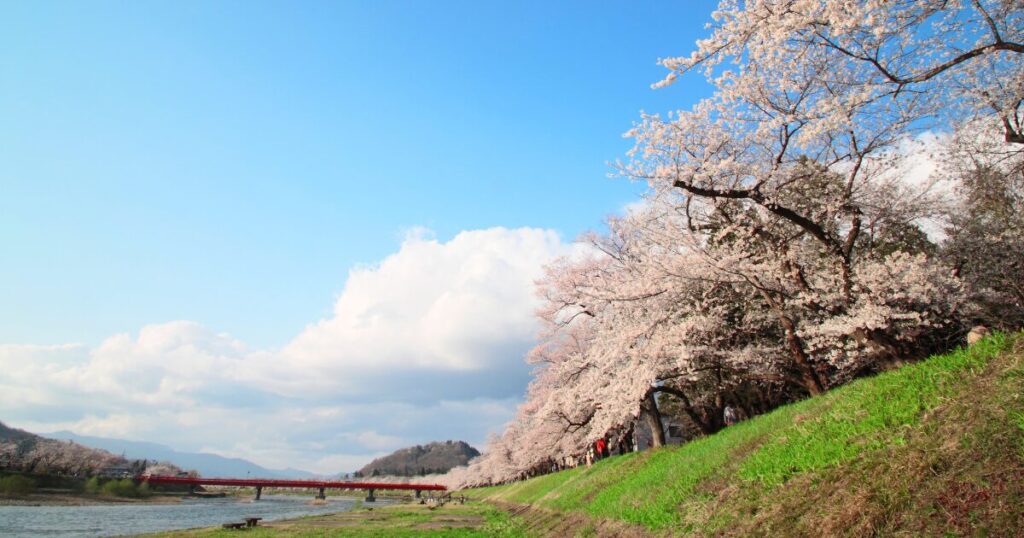
Kakunodate is a historic samurai district famous for its weeping cherry trees, which bloom beautifully in spring. The streets lined with these trees create a magical atmosphere, attracting visitors from all over Japan. The preserved samurai houses also offer a glimpse into Japan’s feudal past.
4. Iwate Prefecture (岩手県)
Chuson-ji Temple (中尊寺)
Chuson-ji Temple, a UNESCO World Heritage site, is home to the famous Konjiki-do (Golden Hall), a beautifully gilded structure. The temple complex, located in Hiraizumi, is steeped in history and represents the glory of the Oshu Fujiwara clan. It’s a must-see for those interested in Japanese Buddhist art and culture.
Koiwai Farm (小岩井農場)

Koiwai Farm is a vast dairy farm located near Mount Iwate. It offers a variety of family-friendly activities, including horseback riding, cow milking, and butter-making workshops. Visitors can also enjoy fresh dairy products like ice cream and cheese while taking in the beautiful rural scenery.
Ryusendo Cave (龍泉洞)
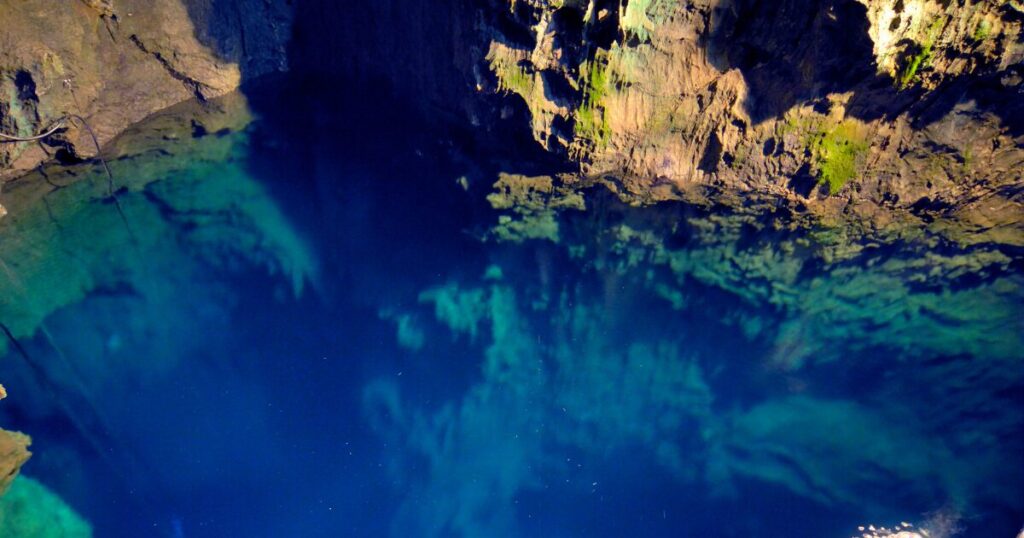
Ryusendo Cave is one of Japan’s three great limestone caves, famous for its crystal-clear underground lakes. The cool, mystical atmosphere inside the cave, combined with its impressive stalactite formations, makes it a popular destination for adventurous travelers and nature lovers alike.
Yugendo Cave (幽玄洞)
Yugendo Cave is known for its unique geological features, including ancient fossils embedded in the cave walls. Visitors can explore the intricate limestone formations while learning about the cave’s long history and the natural forces that shaped it over millions of years.
Jodogahama (浄土ヶ浜)

Jodogahama, located on the Sanriku Coast, is famous for its striking rock formations and crystal-clear waters. The contrast between the white rocks and blue sea creates a heavenly landscape, which is why it’s called “Pure Land Beach.” It’s a great spot for boat tours and scenic walks.
Sanriku Coast (三陸海岸)

The Sanriku Coast is renowned for its rugged beauty, featuring dramatic cliffs, rocky outcrops, and deep blue waters. The area offers stunning views and is part of the Sanriku Fukko National Park, making it a great destination for hiking and exploring Japan’s northeastern coastline.
5. Yamagata Prefecture (山形県)
Ginzan Onsen (銀山温泉)

Ginzan Onsen is a charming hot spring town that feels like a step back in time. The town’s historic ryokan, built during the Taisho era, line the Ginzan River, creating a nostalgic atmosphere. In winter, the snow-covered landscape adds to its fairy-tale charm, making it a popular destination for romantic getaways.
Risshaku-ji Temple (立石寺, 山寺)

Risshaku-ji, commonly known as Yamadera (Mountain Temple), is perched on a mountainside in Yamagata. Visitors climb over 1,000 stone steps to reach the temple’s upper levels, where they are rewarded with stunning views of the valley below. The temple’s serene atmosphere makes it a popular spot for reflection and meditation.
Zao Onsen (蔵王温泉)

Zao Onsen is one of the oldest and most famous hot spring resorts in Japan. The area is known for its unique sulfuric waters, which are said to have healing properties. In winter, Zao turns into a popular ski resort, famous for its “snow monsters,” trees covered in heavy snow and ice.
Zao Ropeway (蔵王ロープウェイ)

The Zao Ropeway offers breathtaking views of Mount Zao and the surrounding landscape. Visitors can ride the cable car up the mountain to enjoy panoramic vistas, especially during the winter months when the famous “snow monsters” appear. It’s a great way to experience the beauty of Zao throughout the year.
Bukeyashiki Street (武家屋敷通り)

Bukeyashiki Street in Yonezawa is a preserved samurai district, where visitors can explore traditional samurai residences and gardens. The area provides a glimpse into the life of the samurai class during the Edo period, making it a fascinating cultural and historical destination in Yamagata.
6. Fukushima Prefecture (福島県)
Ouchi-juku (大内宿)

Ouchi-juku is a well-preserved Edo-period post town, famous for its thatched-roof houses. The town served as a rest stop for travelers along the Aizu Nishi Kaido route, and today visitors can explore its historic streets, sample traditional foods, and learn about the area’s rich cultural heritage.
Tsuruga Castle (鶴ヶ城)

Tsuruga Castle, also known as Aizuwakamatsu Castle, is a symbol of samurai resilience. The castle was a key stronghold during the Boshin War and has since been reconstructed. Visitors can explore the castle grounds and museum, learning about the history of the Aizu clan and their fight for Japan’s future.
Iizaka Onsen (飯坂温泉)
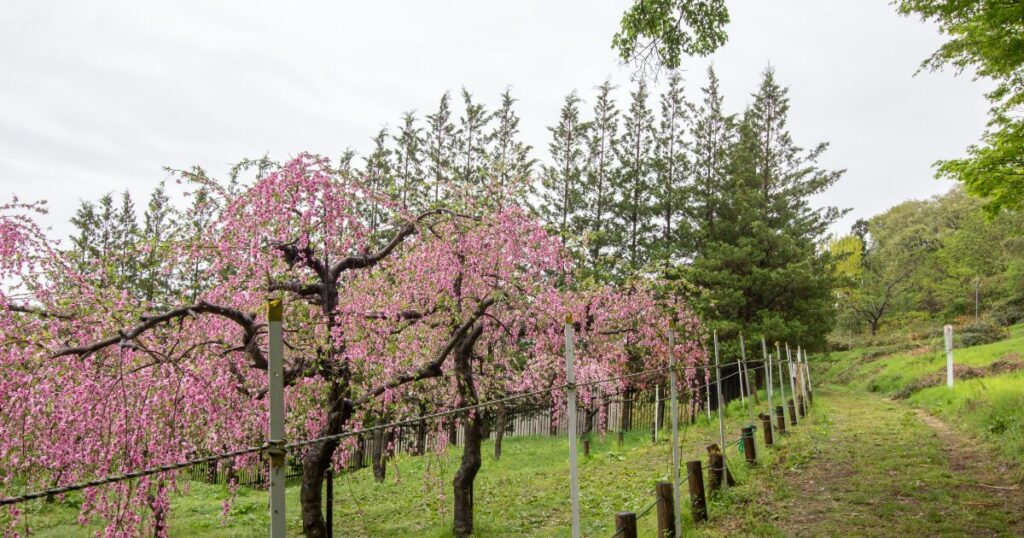
Iizaka Onsen is one of Fukushima’s most popular hot spring towns, offering a range of traditional ryokan and public baths. The area’s healing waters have been enjoyed for centuries, and today it remains a popular spot for both locals and tourists seeking relaxation.
Goshikinuma Nature Trail (五色沼自然探勝路)

The Goshikinuma Nature Trail is a scenic hiking path that winds through the stunning Goshikinuma ponds, known for their varying shades of blue and green. The trail is an easy walk and offers incredible views of the natural beauty of the Bandai-Asahi National Park, perfect for nature lovers and photographers.
Oze National Park (尾瀬国立公園)

Oze National Park is a sprawling nature reserve known for its marshlands, alpine flora, and scenic hiking trails. It’s especially popular during the spring when the skunk cabbage flowers bloom and in autumn when the area’s foliage turns vibrant shades of red and orange. The park is a haven for outdoor enthusiasts.
Tonohetsuri (塔のへつり)

Tonohetsuri is a scenic cliff formation along the Okawa River in Fukushima. The towering cliffs, shaped by erosion over centuries, create a dramatic landscape. Visitors can walk along the narrow paths and bridges carved into the rock, enjoying breathtaking views of the river and cliffs.
Miharu Takizakura (三春滝桜)

Miharu Takizakura is one of Japan’s most famous cherry blossom trees, over 1,000 years old and classified as a national treasure. The weeping cherry tree is especially beautiful in spring when it’s in full bloom, attracting visitors from all over the country to witness its majestic beauty.
Abukuma Cave (あぶくま洞)
Abukuma Cave is a limestone cave known for its impressive stalactites and stalagmites. Visitors can explore the underground world of intricate rock formations, including the “Christmas Tree,” one of the largest stalactite formations in Japan. The cave is illuminated, creating a mystical atmosphere for explorers.
Discover the Charm of Tohoku

Tohoku is a region where you can experience the true essence of Japan—rich in history, culture, nature, and culinary delights. Whether you’re exploring the picturesque towns of Ginzan Onsen and Kakunodate or indulging in fresh seafood along the Sanriku Coast, Tohoku offers something for every traveler. Despite its many hidden gems, this region remains relatively undiscovered by international tourists, making it the perfect destination for those seeking an authentic and less crowded experience in Japan.
So, if you’re planning a trip to Japan, don’t overlook the wonders of Tohoku. Its unique blend of nature, history, and tradition offers a travel experience you won’t forget.










